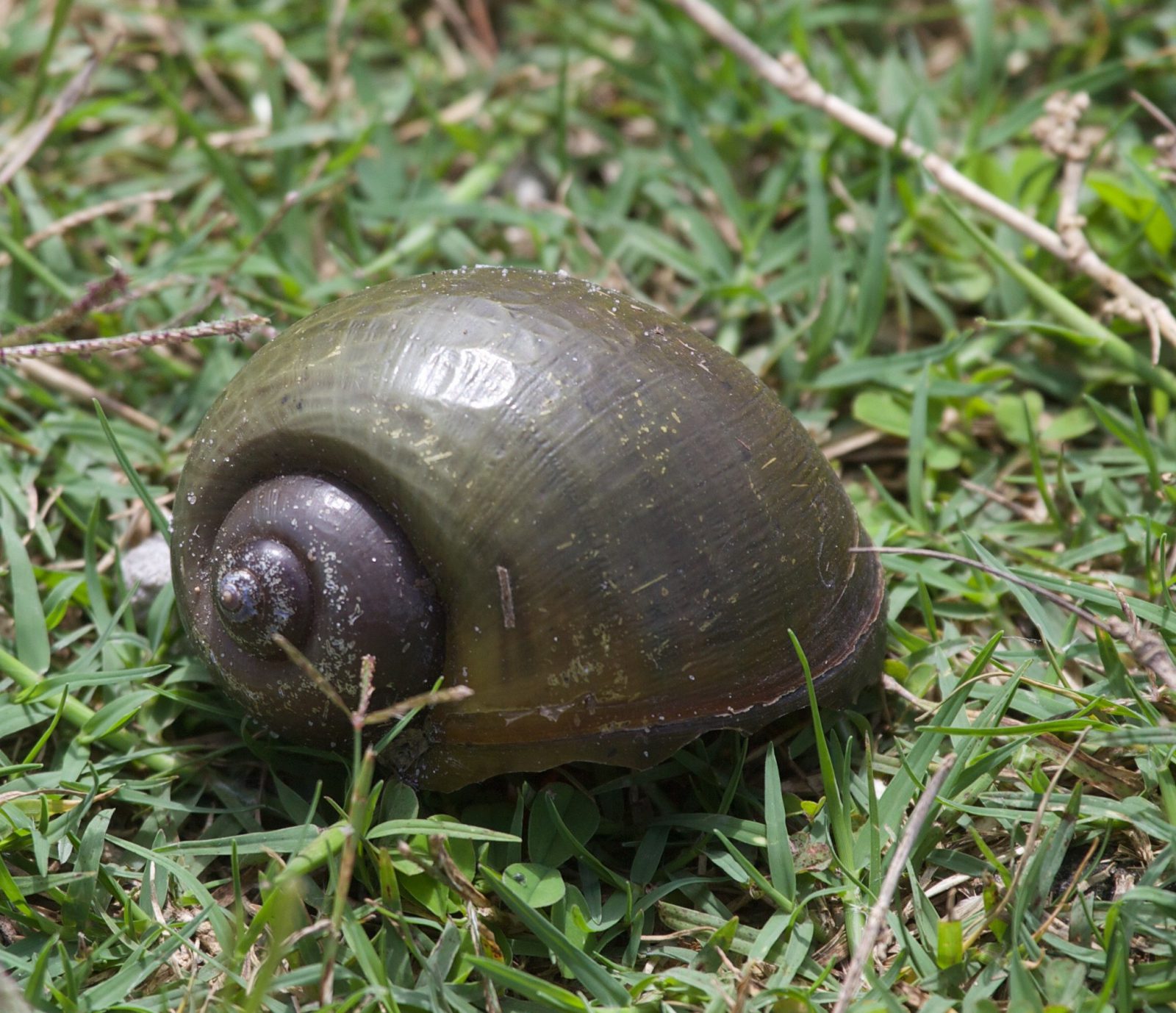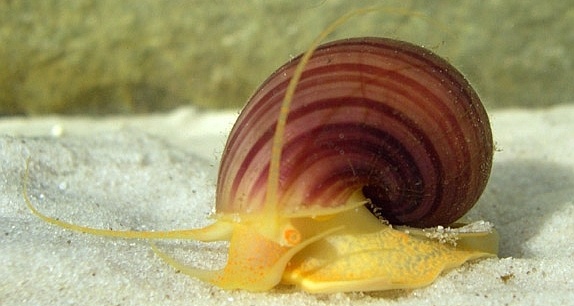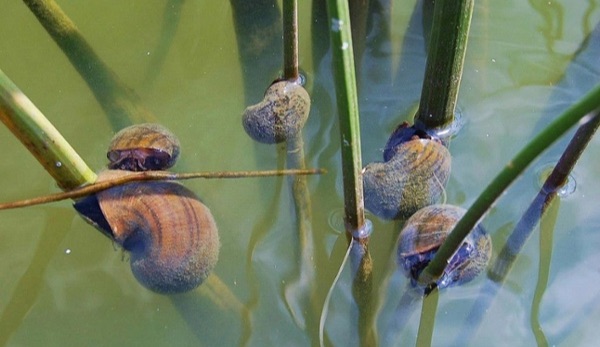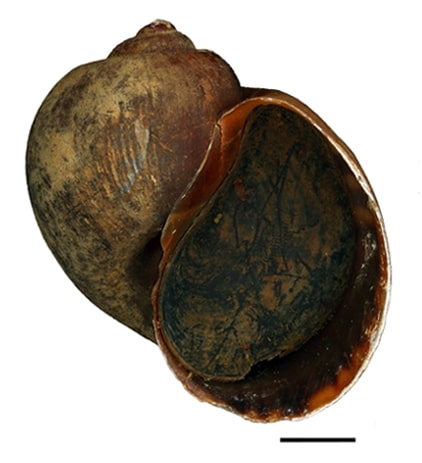
Managing Invasive Apple Snails
As global travel and transport become increasingly accessible, the risk of plant, animal, insect and mollusk relocation becomes greater. This is a serious problem. When a species native to one region is introduced to another, it is considered invasive. Invasive species have few or no natural predators and often destroy entire ecosystems by competing with native species, outgrowing their habitat and decreasing the biodiversity of surrounding life. Take the state of Florida, for instance. The delicate wetlands and aquatic ecosystems in the region are known for their unique diversity. However, increased tourism and shipping ports, along with greater accessibility from South America, have facilitated the introduction of many non-native species to the state, like the invasive and destructive apple snail.
Apple snails are a large, freshwater species that are part of the family Ampullariidae. When introduced to non-native areas, they can rapidly alter the ecological makeup of aquatic ecosystems due to their aggressive feeding style and rapid growth rate. They are voracious and opportunistic, feasting on multiple types of aquatic vegetation and other snail species, which can drastically alter nutrient dynamics in aquatic ecosystems. These freshwater snails are also amphibious, meaning they can survive seasonally in both terrestrial and aquatic environments, including lakes, ponds and wetlands. They have an unusual gill and lung adaptation, which they utilize during their reproductive cycles. In response to seasonal changes in water levels, this adaptation allows them to lay eggs outside of the water column, preventing predation by native aquatic predators.
While it’s not fully known how apple snails originally entered the United States, one theory is that the aquarium trade industry is responsible for their introduction. Apple snails are popular among aquarium enthusiasts due to their decorative shells and rapid growth rates. Unfortunately, irresponsible aquarium dumping and careless trading have allowed the species to infiltrate new ecosystems.
Apple snails were also introduced to other areas of the globe by the escargot industry. It was believed that apple snails would provide an affordable dietary source of protein for many cultures. While they are a prized food source in parts of the world, many of these industries did not achieve the success that was expected. This is partially due to the tendency of the species to host rat lungworm, a disease that can infect predators and even humans if it is consumed without proper food preparation.
As a result of their introduction to non-native regions, apple snails have also become a serious threat to regional crop production; they’ve had deleterious effects on rice crop production throughout Asia and the taro industry in Hawaii. Now, they are threatening the agricultural industry in the southern US.
Once an invader takes hold in a new ecosystem, it can be extremely difficult to eradicate the species. However, several management options for the removal of apple snails have proven effective. Strategically-placed screens and barriers in water inflows and outflows can help block invasive species migrations to new areas and congregate existing population for more streamlined removal. Mechanical or physical methods entail removing the snails by hand or with various types of equipment. This is a labor intensive and time consuming option, but has virtually no adverse effect on the rest of the ecosystem.
Mechanical services also extend to hydro-raking and harvesting, which can be used to remove large amounts of invasive aquatic plant species or restore large amounts of water or wetland. Mechanical solutions can help set the clock back on an aquatic ecosystem by removing excess nutrients and improving the poor water quality conditions that tend to encourage undesirable invasive species growth.
If physical and mechanical removal strategies prove unsuccessful, a molluscicide can be utilized. When applied properly by a licensed professional, molluscicides are a safe and effective strategy for targeting invasive apple snails without affecting plants, insects and other aquatic life in the ecosystem. As with the application of traditional herbicides and algaecides, which target plant and algae growth, molluscicides are safe when used properly.
While invasive species management is possible, it can be extremely difficult, expensive and time consuming. Therefore, the most effective management practices must begin with educational outreach and prevention. Sharing educational articles in community newsletters or holding public forums about the dangers of invasive species is a great first step to expand public knowledge about the issue.
It’s also important to strengthen the health of the natural ecosystem. Host community bulb plantings around lakes and stormwater ponds to encourage the growth of beneficial vegetative buffers comprised of native grasses and flowering plants. Introduce aeration systems in local waterbodies to help circulate the water and improve desirable dissolved oxygen levels. Apply beneficial bacteria and phoslock to help remediate excess nutrients, which are responsible for fueling nuisance and invasive aquatic plant species. An ecosystem is better equipped to withstand and even thwart the introduction of invaders when it has a strong network of natural support.
The spread of invasive species and the associated risks to our local ecosystems will continue to increase as the world becomes more interconnected, but these situations are not inevitable or permanent. Whether your community is at risk of invasive species introduction or has already discovered an infestation, it’s ultimately most important to make sure homeowner associations, municipalities, property owners and tourists are all working towards the same goal of ecological balance.
SOLitude Lake Management is a nationwide environmental firm committed to providing sustainable solutions that improve water quality, enhance beauty, preserve natural resources and reduce our environmental footprint. SOLitude’s team of aquatic resource management professionals specializes in the development and execution of customized lake, stormwater pond, wetland and fisheries management programs that include water quality testing and restoration, nutrient remediation, algae and aquatic weed control, installation and maintenance of fountains and aeration systems, bathymetry, shoreline erosion restoration, mechanical harvesting and hydro-raking, lake vegetation studies, biological assessments, habitat evaluations, and invasive species management. Services and educational resources are available to clients nationwide, including homeowners associations, multi-family and apartment communities, golf courses, commercial developments, ranches, private landowners, reservoirs, recreational and public lakes, municipalities, drinking water authorities, parks, and state and federal agencies. SOLitude Lake Management is a proud member of the Rentokil family of companies in North America.












